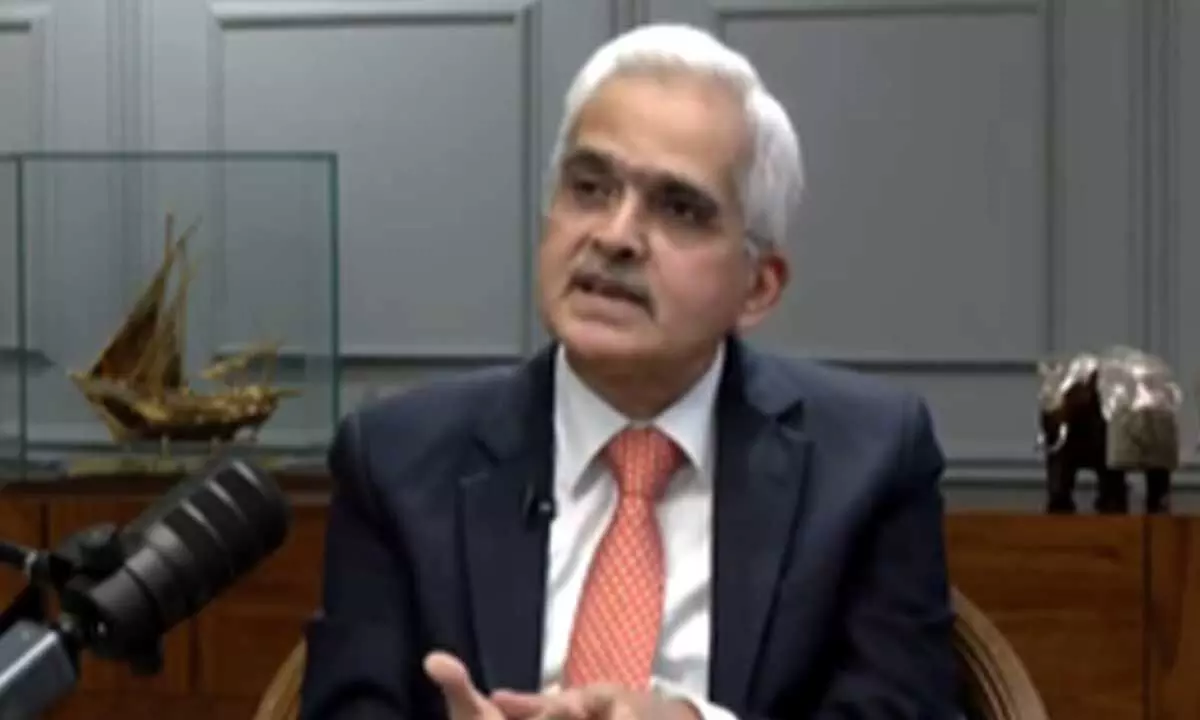Live
- They always want me to win, and now I feel lucky to have been offered a story like ‘Zebra’: Satyadev Kancharana
- ‘Democracy first, humanity first’: PM Modi in Guyana's parliament on two countries' similarities
- PKL Season 11: Telugu Titans register third straight win to top standings
- Is Pollution Contributing to Your COPD?
- NASA Unveils Underwater Robots for Exploring Jupiter's Moons
- Additional Central forces arrive in violence-hit Manipur
- AR Rahman and Saira Banu’s Divorce: Legal Insights into Common Issues in Bollywood Marriages
- 82.7 pc work completed in HPCL Rajasthan Refinery area: official
- Curfew relaxation extended in 5 Manipur districts on Friday
- Tab scam prompts Bengal govt to adopt caution over fund disbursement
Just In
Banks must monitor gap between credit and deposit growth: RBI Governor

Banks need to carefully monitor the persistent gap between credit and deposit growth because it could become a challenge, leading to liquidity issues, Reserve Bank of India Governor Shaktikanta Das told NDTV Profit in an exclusive interview on Tuesday.
New Delhi: Banks need to carefully monitor the persistent gap between credit and deposit growth because it could become a challenge, leading to liquidity issues, Reserve Bank of India Governor Shaktikanta Das told NDTV Profit in an exclusive interview on Tuesday.
"We are cautioning banks to monitor this situation carefully. There is no problem now, but it can become a structural liquidity problem in the future," Das said.
Banks should also carefully monitor the change in investment strategies of young aspirational Indians, Das said. As of now, the shift from deposits to other investment avenues is not an issue, but in the future, it can lead to a structural liquidity issue. Therefore, banks must introduce new products and services in deposits, as well as use their vast branch networks to their advantage, he explained.
Das said banks should maintain a balance between credit and deposit growth. What is positive, is that banks are raising funds through infrastructure bonds these days at attractive rates, he added.
The RBI chief said a lot of banks are lining up infrastructure bonds to support their balance sheets. Banks and financial institutions raise funds through infrastructure bonds to finance their long-term infrastructure projects. These bonds have a minimum maturity of seven years and are eligible for some regulatory exemptions.
While loans extended by banks rose 13.7 per cent as of July 26 during the current financial year compared to the same period of the previous year, there was only a 10.6 per cent growth in deposits, according to the RBI data.
While credit growth and disbursement have become fast-paced due to technology, deposit mobilisation which is undertaken largely through physical channels was not keeping pace, he said.
Finance Minister Nirmala Sitharaman, at a review meeting held on Monday, asked the chiefs of public sector banks to accelerate the growth rate of their deposits to match the quicker pace at which the credit is growing.
The growth rate of deposits is 3 to 4 per cent slower than the pace at which credit is growing in recent months which is seen as posing a risk of asset-liability mismatch in the banking system.
Addressing the media after a post-Budget meeting with the RBI's Central Board of Directors earlier this month, the Finance Minister said that banks must focus on the core business of raising deposits and lending.
She pointed out that the RBI has given enough liberty to banks on fixing interest rates and they should come out with innovative portfolios to attract deposits so that more funds are available for lending to spur economic growth and create more jobs.
She said while investors were increasingly turning to the stock markets, banks also needed to come up with schemes to attract more deposits.
The Finance Minister further stated that instead of focusing only on big deposits, banks with their vast network of branches must focus on raising smaller deposits which come in "trickles" but are the "bread and butter" of the banking system.
RBI data shows that low-cost current and savings accounts (CASA) of banks have come down from 43 per cent of total deposits a year ago to 39 per cent this year.
Banks, therefore, need to focus on these CASA deposits to cut costs instead of focusing only on bulk deposits in which the "flight can be very fast", Das earlier said.

© 2024 Hyderabad Media House Limited/The Hans India. All rights reserved. Powered by hocalwire.com






